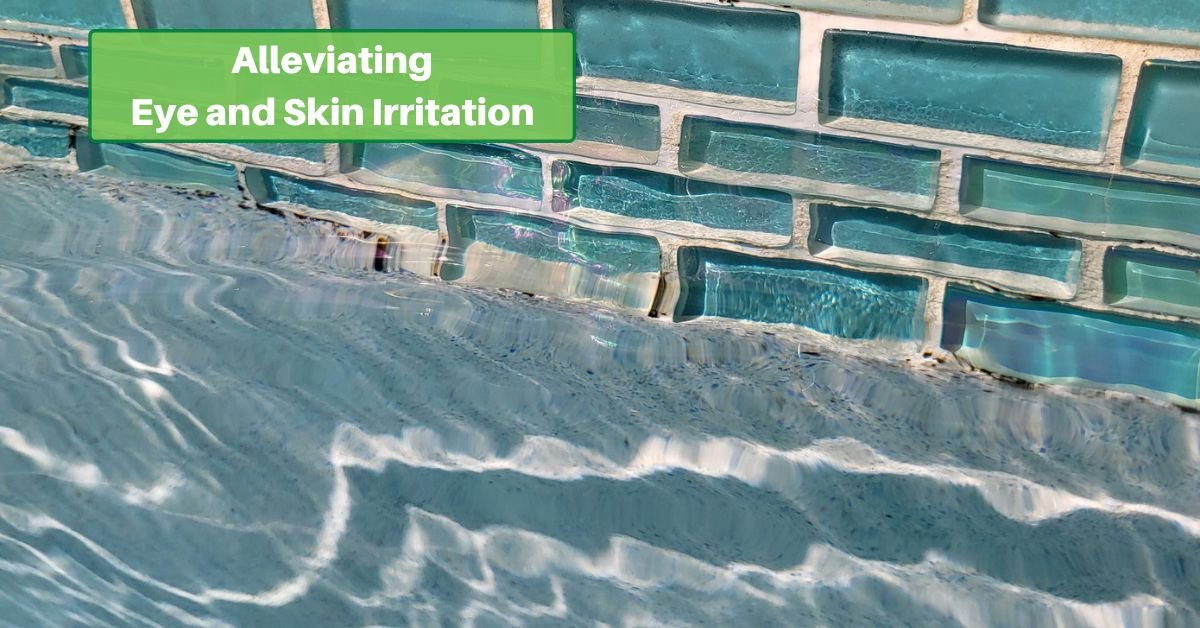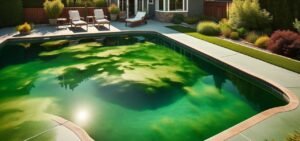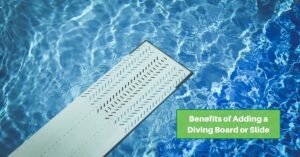Swimming is beloved by many, but the discomfort of eye and skin irritation can quickly overshadow the bliss of plunging into a refreshing pool. Such irritation is often a telltale sign of underlying issues with pool water quality, specifically imbalances in the water’s chemical composition. Understanding and addressing these imbalances is crucial not only for the comfort and safety of swimmers but also for the overall health of the pool environment.
Understanding Pool Water Chemistry
Well-balanced water chemistry is the heart of a healthy pool. This includes maintaining optimal pH levels, chlorine, and other chemicals that disinfect water and neutralize pollutants.
The pH level, which measures the acidity or alkalinity of the water, should ideally be between 7.2 and 7.8. This range ensures that the water is neither too acidic, which can cause eye and skin irritation, nor too alkaline, which can lead to cloudy water and scaling.
Chlorine, on the other hand, kills bacteria and other pathogens. Its ideal concentration should be between 1 and 3 parts per million (ppm) to effectively sanitize the pool without causing irritation.
Common Causes of Irritation
Chlorine Imbalance: Contrary to popular belief, the strong “chlorine smell” and associated irritations are often due to chloramines, compounds formed when chlorine reacts with nitrogen-containing contaminants like sweat and urine. High levels of chloramines can cause eye and skin irritation and indicate that the pool requires additional chlorine to become adequately sanitized.
In other words, it’s not too much chlorine that’s the issue; it’s not enough!
pH Imbalance: An incorrect pH level can compromise chlorine’s effectiveness, making it either too harsh or too ineffective. Both extremes can lead to irritation, with acidic water causing itchy, burning sensations and alkaline water resulting in dry, sticky skin and eye discomfort.
Contaminants: Beyond chemical imbalances, organic pollutants and environmental factors can also degrade water quality. Leaves, dirt, and oils introduce bacteria and other microorganisms into the pool, exacerbating irritation risks and demanding more chlorine to maintain cleanliness.
Solutions for Chemical Imbalances
Regular testing of pool water is essential to identify and rectify chemical imbalances. Testing kits available in the market can measure chlorine levels, pH, and other critical parameters. Upon detecting imbalances:
- Adjusting Chlorine Levels: If chlorine levels are low, a shock treatment may be necessary to eliminate chloramines and restore chlorine’s effectiveness. Conversely, if levels are too high, allowing the pool to ventilate and adding neutralizing chemicals can help bring the concentration down to a comfortable range.
- Balancing pH: Sodium bisulfate can lower an overly high pH, while sodium carbonate (soda ash) can raise a low pH to the desired level. Adjusting pH not only alleviates irritation but also optimizes chlorine’s sanitizing properties.
Maintaining a regular maintenance schedule, including weekly water testing and adjustment, is vital to prevent the recurrence of these issues.
Addressing Contaminants
Minimizing the introduction of contaminants into the pool plays a crucial role in maintaining water quality. Encouraging swimmers to shower before entering the pool can significantly reduce the amount of sweat, oils, and cosmetics entering the water. Additionally, using a pool cover when the pool is not in use can prevent environmental debris from contaminating the water.
Regular cleaning and filtration are also paramount. This includes skimming the pool’s surface daily, vacuuming the bottom regularly, and ensuring the filtration system is clean and functioning efficiently. These practices reduce the demand for chemical sanitizers and help keep the water clear and irritant-free.
Natural and Alternative Sanitizers
Many pool owners are turning to natural and alternative sanitizing methods to reduce chemical irritants. These systems can complement or, in some cases, replace traditional chlorine treatments, potentially reducing the incidence of skin and eye irritation.
- Saltwater Systems: By converting salt to chlorine through electrolysis, saltwater pools maintain sanitizer levels with less noticeable chlorine presence. This gentle approach often results in less irritation for swimmers.
- UV Systems: Ultraviolet light systems sterilize pool water by exposing it to UV light, killing bacteria and viruses. While it doesn’t eliminate the need for chlorine, it can significantly reduce the amount required, thus diminishing the potential for irritation.
- Ozone Generators: These systems use ozone gas, a powerful oxidizer, to break down contaminants in the pool water. Ozone reduces the need for chlorine, thereby lowering the chances of irritation. However, it’s important to note that ozone must be used in conjunction with a residual sanitizer to ensure water safety.
Each method has benefits and limitations, and their effectiveness can vary depending on pool size, usage, and individual sensitivity. Consulting with a pool professional can help determine the best approach for your specific situation.
Skin and Eye Care Tips for Swimmers
While maintaining pool water quality is crucial, swimmers can also take personal steps to minimize irritation:
- Pre-swim Shower: Rinsing off before entering the pool removes excess sweat and body oils, reducing the formation of chloramines that cause irritation.
- Wearing Goggles: Protecting eyes with well-fitting goggles can prevent direct exposure to chlorine and other irritants in the water.
- Hydration and Moisturization: Keeping skin hydrated by drinking plenty of water and applying a moisturizer after swimming helps combat dryness and irritation caused by pool water.
- Rinse Off After Swimming: A quick shower immediately after swimming can remove residual chlorine or other chemicals from the skin and hair, reducing the risk of irritation.
Should irritation occur despite these precautions, over-the-counter remedies such as eye drops for red eyes or moisturizers designed for chlorine exposure can offer relief. However, persistent irritation should be evaluated by a healthcare professional to rule out allergies or other underlying conditions.
Eye and skin irritation from swimming in pool water is a common concern that can detract from the enjoyment of this healthful activity. By understanding the root causes of these irritations, pool owners and swimmers can take proactive steps to mitigate them. Maintaining balanced water chemistry, exploring alternative sanitizers, and adopting good skin care practices are all effective strategies to ensure a comfortable and safe swimming environment.









